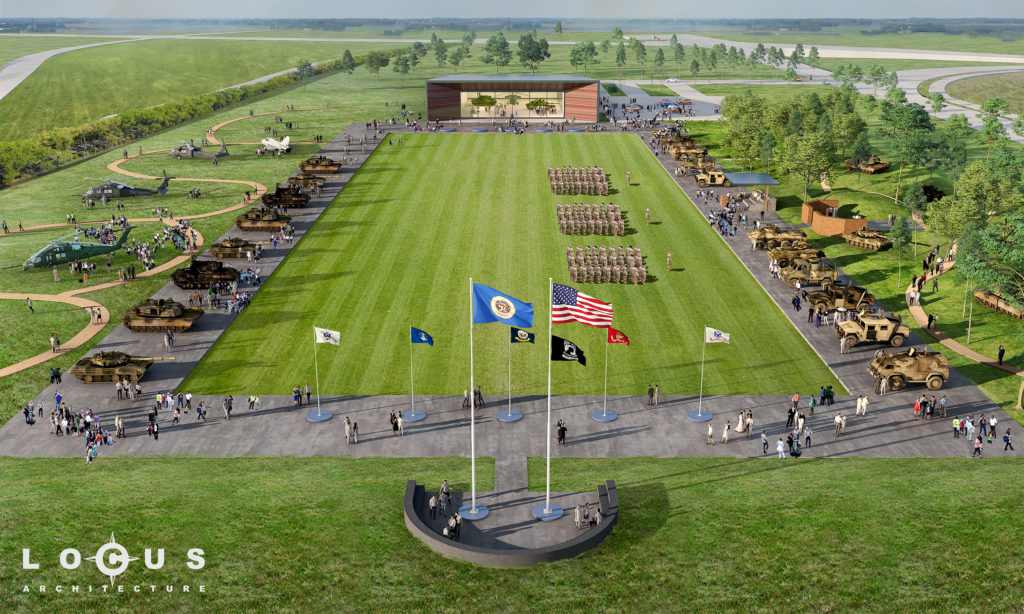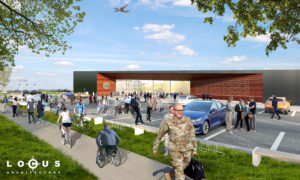
Go big or go home
By Tim Engstrom
The Minnesota Legionnaire
The Minnesota Military Museum has existed in a building — actually several buildings — at Camp Ripley for 40 years. If all goes as planned, the museum will have a major new home in a few years.
“We are in the process to launch a capital campaign to build a new museum,” said Executive Director Randal Dietrich.
More than 80,000 artifacts are stored in a dozen buildings throughout the Minnesota National Guard’s training facility near Little Falls. Dietrich would like to get many of them out of the dark and into the light.
“Camp Ripley has been good to us to provide this space to use,” he said.
A new museum would bring the collection under a single roof and allow the Minnesota Military Museum to share more stories, Dietrich said.
Plus, building it outside of Camp Riley most likely would increase visitation, because it would be outside the security gates. He noted how many civilians don’t realize they can enter Camp Riley, at least prior to the COVID-19 restrictions. Presently, the museum is closed, like all museums statewide.
The plans for a new building would offer 42,000 square feet of space and show more exhibits. For example, the museum plans to show the post-9/11 experiences as part of a mobile tour next year, and then the exhibit could have a place at the new location.
Presently, the museum occupies 24,000, but most of that is storage. Only 6,000 square feet is for public viewing inside a 90-year-old battalion headquarters.

“This aging and limited exhibition space does not allow for veteran stories from across the state and all the branches to be fully represented,” says the brochure on the proposed new museum.
The new location would be on the eastern side of the Mississippi River on a 32-acre strip of land across from the Minnesota State Veterans Cemetery between Minnesota Highway 371 and the BNSF Railroad that aligns Morrison County Road 76. The south end of the land abuts Minnesota Highway 115, which leads to Camp Ripley.
(By the way, Camp Ripley is on the western side of the river.)
The land had been a sunflower field with a $30,000 value and was donated by Bob Anderson, a veteran.
With the new site along three roads, Dietrich said, it no doubt will increase exposure and traffic.
Dietrich said the main motivator behind moving the Minnesota Military Museum is the FAA. The museum is in the crash zone for the Ray S. Miller Army Airfield at Camp Ripley. As cool as it is to see low-flying C-130 aircraft when visiting the museum, it also presents a danger. The FAA has directed the museum to move.
The plan is to have a 600-by-200-foot parade grounds with review stand and reflecting pools for each military branch. A trail called the Gold Star Trail will wind through the property. There will be a court of honor, a veterans plaza, space for tanks and other military equipment.
Inside, the museum will offer galleries for wars from the Global War on Terror to the Civil War — in addition to the home-front efforts. There will be an art gallery, classrooms, a theater, research library, exhibit galleries, a resource center and, of course, a welcome desk.
“This is your dad’s story, your grandfather’s story or your mom’s story,” Dietrich said.
The names of all 87 counties will be etched into the walls.
“The intent of the site layout is to conceptually convey the entire spectrum of the Minnesota veteran experience,” states the brochure.
The price tag of construction is $13.86 million. The price tag of relocation is $25,000. Plus it needs $1 million for indoor elements and another $1 million for outdoor items. That rings up to $16 million.
Dietrich said he is seeking $2 million from private donations. To donate, call the museum at 320-616-6051 or visit the website at mnmilitarymusem.com. The museum will sell pavers, among other ideas.
The ball got rolling on the public side last year with state Rep. Ron Kresha of Little Falls and state Sen. Paul Gazelka of Nisswa. The Camp Ripley area is in their districts. They are calling for $26.88 million in bonding-bill funding from the Legislature this year for the project. The Minnesota Department of Veterans Affairs would oversee the spending of the bonding-bill money.
Dietrich wants to make sure Minnesota is able to preserve stories of the past generations while being able to carry forward stories of present and future generations.
The goal is to break ground in August 2021 and open on Veterans Day 2022.